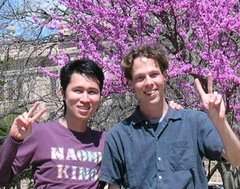Lessig (2003) argues that the advent of the Internet led to the expansion of the reach of copyright, resulting in a devastating effect for the environment for creativity (p.130). As he puts it, the possible uses of copyrighted works distinguish among 3 categories: unregulated uses, related uses, and regulated uses deemed fair, or interchangeably fair uses. And since the Internet came into the picture, copyright owners’ control over these uses of their works has been greatly extended, to a degree much higher than what the copyright law dictates. Lessig (2003) cited several examples to reinforce his argument. One of them pertains to the case where Video Pipeline’s idea of distributing the video clips as being within their “fair use” rights was met with Disney’s countersuit which gains support from its control over the access to their video clips made possible by the Internet. Another example involves how the Digital Millennium Copyright Act (DMCA) puts forth support for the prohibition of the spreading of information on the Internet as to hacking Aibo pets to make them do new tricks. Still another example relates to Felten’s academic paper on the weakness in an encryption system developed by Secure Digital Music Initiative (SDMI). Again, DMCA was resorted to as a way to ban this paper from being published. In sum, Lessig (2003) concluded that the expansion of the copyright laws, though providing better protections for the copyright holders, at the same time weakens the opportunity to create and transform works, which in turn undermine the tradition of free culture (p.173).
Positive that Lessig’s argument would no doubt make perfect sense to creative artists who long for more inspirations and better flexibility to access others’ works, I tried to picture myself in the shoes of those copyright holders and examine this issue from their perspective. And this shift of perspectives brought to my attention the needs and desires of the copyright holders to protect the works that they gave birth to. That is, since they devoted efforts and time in producing the works, of course they would hope to enjoy the benefits and acknowledgement that come with the works. Therefore, it comes as no surprise that when they are granted with more control over their works in terms of copyrights, they would take the best advantage of it. Actually, I’ve been thinking the whole time while browsing through this chapter that if I were the one who designed the Aibo dogs, I certainly would not be too happy to see my works hacked and re-programmed to perform new tricks without any prior permission from me, especially if those tricks were the ones that I’ve been holding in store for the next promotion. In this case, I guess I would make no exception from the Aibo pet company and fall back upon the DMCA for the protection of my rights.
Turning back to the creative artists’ viewpoint, I guess the free market economy might somehow function to counteract this over-exercising of the copyrights on the part of the owners. To cite the example provided by Lessig (2003), if Barnes & Noble banned browsing books (over-exercising control), it would drive customers to other bookstores. In the same vein, if an e-book publisher imposed excessive restrictions on the times allowed to read their e-books (over-exercising control), readers might end up getting the physical version of those books and eventually turn to other publishers. Additionally, even though users are now subject to more restrictions and permissions to proceed when it comes to using the copyrighted works, technology, by which I mean the Internet, actually simplifies and accelerates the processes of obtaining these permissions in the same manner that it eases the process of detecting infringement of the law (Lessig, 2003). While reading, I kept getting this mental picture of me trying to get an account from the Wretch (a blog system) which required that I read and accept their copyrights up front. As far as I can remember, to do so, all I needed to do was ticking the “I agree” box and hitting the “continue” button. And then I was good to go. What this experience of mine goes to show is that technology, while unfortunately enabling the over-exercise of control over copyrights, also serves to simplify the act of getting permissions and might as such facilitate rather than weaken creation.
II.

This picture comes from http://members.tripod.com/~friends520/
In Free Culture, Lessig (2003) states that “the copyright now is automatic; the copyright exists whether or not you mark your work with a ©.” (p.137) These statements sent me back to the examination of the differences between literacy and orality again. In regard to literacy, when you put ideas down into words and publishes a piece of work as such, be it a book, an article, or a manuscript, you are almost immediately entitled to the copyrights to that piece of work, for the written work itself stands as the powerful proof. In this case, yes, the copyright could be automatic. However, when it comes to orality, if you verbalized something without penning it down or recording it with some electronic devices, your thoughts would not be awarded with any copyrights since there would be no proof showing you’re the one who “owns” these thoughts. So, no, the copyright doesn’t come automatically. This reminds me of one of the Friends episodes where Chandler and Ross argued over the ownership of a monkey joke. Chandler claimed that he told the joke in Central Perk while Ross asserted that he used to keep a monkey as a pet and of course it was he who came up with the monkey joke. This plot duly demonstrates the no-automatic-copyright characteristic of orality. To conclude, I think “automatic copyrights” could also be put onto the list of the differences between literacy and orality.

No comments:
Post a Comment